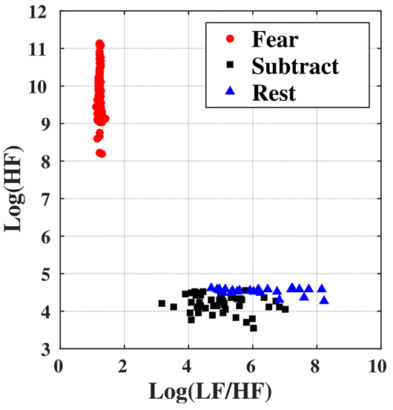Most wearables can monitor heart rate and keep track of steps, but it turns out they can measure more than physical actions.
In fact, things could get a lot more emotional for these devices.
Through wearables, scientists can now detect different emotional reactions in users, and could eventually use this data to predict their mental state. Leveraging biometric data, researchers from the University of Massachusetts at Amherst, University of Toledo and Technicolor found they can use wearables to track changes in a person’s autonomic nervous system (ANS) in response to external stimuli.
“Our study was motivated by the increasing popularity of wearables, which have the potential to provide tremendous insights into human behavior,” said Kevin Xu, an assistant professor at the University of Toledo. “There has been prior work on using data collected from wearables to predict emotions, but it has mostly ignored the physiology behind emotions. Our focus was to use prior knowledge around physiology in order to identify what types of tasks and autonomic nervous system responses could be identified using wearables.”
The ANS, the core part of the study, is an essential component to how people externally express emotions. It manages how organs, such as the heart and lungs, respond to various situations. It is comprised of two systems: the sympathetic nervous system (SNS) and the parasympathetic nervous system (PNS), which create opposing reactions.
The SNS is commonly known to trigger the “fight or flight” response and is activated under stressful circumstances. For example, in a dangerous situation, a person’s SNS will trigger the heart to speed up, increasing blood flow to each part of the body, preparing them to quickly escape. Conversely, the PNS is generally referred to as the “rest and digest” system. It is employed by the ANS under stress-free conditions, often to offset the reactions of the SNS system.
In researching ANS tracking, the researchers provided subjects with wearables to test their physiological responses to ANS reactions for fear conditioning, cognitive load and rest. Fear conditioning includes training a subject to anticipate an event that causes fear. In the experiment, subjects were conditioned to associate a positive sound tone with the sound of machine gun fire. Researchers, in turn, measured the subjects’ reactions to SNS-PNS activations, which are easily detectable through heart and breathing rate measurements, as well as electrodermal data.
To test cognitive load – the total mental effort used in a task – the researchers gave subjects a high cognitive load task: repeatedly subtracting seven from a number between 500 and 1,000 for 30 seconds. Finally, for the last measured ANS state, the researchers measured the subjects’ body reactions to 30 seconds of uninterrupted rest.
The results, detailed in the data below, show how the research team was able to predict whether a person was at rest, afraid or under high cognitive load using only physiological data collected from a wearable wristband. To advance their research, the team’s next step is to measure the ANS reactions people experience as they go about their daily lives.

Figure 1: Scatter plots of subjects' responses using high frequency component (PNS) and low frequency/high frequency (SNS) components of heart rate. Each point denotes the response of a single subject to a single task.
Differentiating between ANS states is the first step toward assessing a person’s emotional state. Tracking the emotions of users through wearables could completely change how companies interact with users. From improving user experience to assessing mental health, analyzing a user’s emotional state has many applications in the healthcare and consumer sectors.
Additionally, most research today measures cognitive load by disseminating after-the-fact surveys, which are unreliable based on their dependence on human recall. By using wearables, companies working in education or human-machine collaboration could track the data in real-time for more accurate and precise insights.
Wearables have already changed how people monitor their physical health. With this research, wearables could soon transform how people manage their emotions and interact with the world.
Learn more about wearables in IEEE Xplore.





